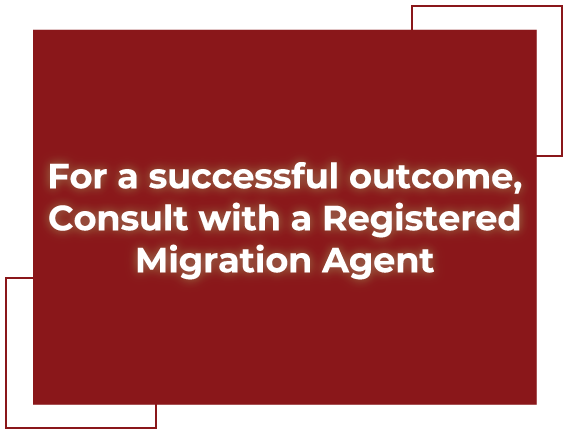- Home
- Services
- Education
- Study in Australia
- Student Visa
What is an Australian Student Visa – Subclass 500?
Upcoming Intakes In Australia
Intake 1: Runs from February/early March to late May/early June.
Intake 2: Runs from July/early August to November.

Top 20 Universities in Australian 2023

Document Evidence Required for an Australian Study Visa
When applying for an Australia Student Visa, you will typically need the following essential documents:
- An Electronic Confirmation of Enrolment, which serves as proof of your admission to a college or university.
- A valid passport.
The visa application fee. - Your GTE (Genuine Temporary Entrant) statement.
- Academic and work experience records.
- Evidence of your financial capability to cover expenses such as tuition fees, living costs, support for dependents, and return airfare.
- Details of your OSHC health insurance policy.
- A statement of purpose.
- If you are under 18 years of age, you may also be required to provide additional documents like parental consent.
Application Process: Studying in Australia in 3 Simple Steps!
Before filling out the visa application, ensure that you meet all the requirements. In order to fulfill these criteria, you will be required to:
Step 1: Meet Australian study requirements: Enroll in a full-time undergraduate, master’s, or Ph.D. course that is registered with the Commonwealth Register of Institutions and Courses for Overseas Students (CRICOS). The university will provide an electronic Confirmation of Enrolment (eCoE) certificate as proof of your enrollment.
Step 2: Meet Language Requirements: Demonstrate your language proficiency by taking a language test. Acceptable test scores include:
- International English Language Testing System (IELTS): 5.5 – 6
- Test of English as a Foreign Language (TOEFL): 46
- Pearson Test of English (PTE): 42
- Certificate of Advanced English (CAE): 162
- Occupational English Test (OET): ‘b’ for each test component.
– Provide a Genuine Temporary Entrant (GTE) statement, affirming your intention to study in Australia and your plans to return.
– Have adequate health insurance: Purchase Overseas Student Health Cover (OSHC) to demonstrate your ability to cover healthcare expenses while in Australia.
– Meet health requirements: Maintain reasonably good health and pass required medical tests.
– Meet character requirements: Ensure you have no criminal or terrorist background, as eligibility for a study visa requires a clean record.
Step 3:
– Create a profile on the Australian Immigration Website and keep scanned copies of your documents ready.
– Complete your visa application, which can be submitted up to 124 days before your course starts.
– After successfully submitting your application and paying the visa fees, you will receive a Transaction Reference Number to track your application’s status.
Cost/Free Requirment & Course Expenses for students
Average Tuition Fees & Course Expenses for Students
- International Undergraduate Students – AUD 14,999 to AUD 389,999
- International Postgraduate Students (Masters Degree) – AUD 19,999 to AUD 36,999
- Doctoral Degree – AUD 13,999 to AUD 36,999
- For this step, you will need to obtain your Certificate of Enrolment, and you may be required to make a partial tuition fee payment to acquire it.
- Additionally, you might be asked to purchase Overseas Student Health Cover to provide assurance to authorities that your health-related expenses are covered.
Australian Student Visa Processing Time in 2023
| Stream | 75% Processing | 90% Processing |
|---|---|---|
| Foreign Affairs or Defense Sector | 20 days | 26 days |
| Postgraduate Research Sector | 39 days | 77 days |
| Independent ELICOS Sector | 23 days | 38 days |
| Vocational Education and Training Sector | 36 days | 52 days |
| Higher Education Sector | 17 days | 32 days |
However, Simplified Student Visa Framework (SSVF) streamlines the visa processing time. Processing Time for Student Visa is:
To ensure a smooth process, it is advisable to submit your student visa application at least 12 weeks prior to the orientation day at your chosen educational institution.

Frequently Asked Questions FAQ's
Ensure you are enrolled in your desired study program in Australia.
Determine if you fall into an exemption category or have Overseas Student Health Cover (OSHC).
If you are under 18, you must demonstrate that you have a welfare arrangement in place.
Many Australian universities also offer a Student Job Search service to assist you in finding part-time work during the term and full-time employment during summer breaks.
The Australian Student Visa permits full-time university degree students to work up to 48 hours every two weeks during academic terms and unrestricted hours during summer breaks.
Step 1 – Utilize the same online request form to obtain a new Electronic Confirmation of Enrolment (eCOE).
Step 2 – Keep in mind that the Overseas Student Health Cover (OSHC) is not automatically extended with the eCOE. You will need to separately arrange an extension to cover the duration of your new student visa. Contact your OSHC provider directly to extend your policy.
Step 3 – Gather the necessary supporting documents to attach to your application. These documents include:
Electronic Confirmation of Enrolment (eCOE).
OSHC Policy.
Your Passport.
Statement demonstrating your Genuine Temporary Entrant status.
Evidence of Financial Capacity.
Step 4 – You can submit your application online for a Student Visa Subclass 500 to the Department of Home Affairs. You have the option to complete this process independently or seek assistance from a registered migration consultant.
Upon receiving your application, the Department of Home Affairs will send you an acknowledgment along with a copy of your Bridging Visa if you are in Australia.
The specific duration depends on the length of your course and the month it concludes. If your course spans more than ten months and ends in November or December, your student visa may remain valid until March 15 of the following year.
In addition to scholarships, the Australian government, as well as public and private organizations, provide grants and bursaries. However, it is essential to check the eligibility criteria and application deadlines for these opportunities.
Eligibility Criteria
International students who wish to study in Australia through the Student Visa Subclass 500 and enroll in a course registered under CRICOS must abide by certain eligibility rules and regulations. The eligibility criteria for the Student Visa 500 include:
Less than 17 years old when starting Year 9
Less than 18 years old when starting Year 10
Less than 19 years old when starting Year 11
Less than 20 years old when starting Year 12.
The student is permitted to apply for more than one course, but he or she should provide a (CoE) or Confirmation of Enrollment for each of them. They will also have to mention it in their visa application; otherwise, the visa will be issued only for the mentioned course.
As part of the visa application process, international students must provide evidence and information to support their GTE claim, such as their academic background, work experience, English language ability, financial capacity, and other relevant information. The Australian Department of Home Affairs (DOHA) uses this information to assess whether the student has a genuine intention to study in Australia and will return to their home country after their studies.
States in Australia to Apply Student Visa








